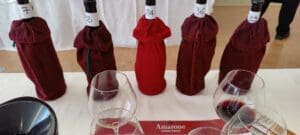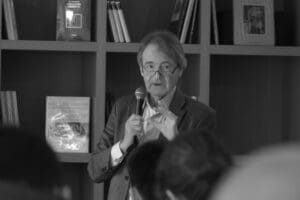December is like a magical month. A month when people go slow, feel pleasant and generally happy. This is also the month of counting down, to Christmas and to New Year. In essence December is all about the letter ‘c’, celebration. The wines of Champagne have always been highly prized for such occasions, but most importantly highly priced. And yes, that is another ‘c’.
Before you go around calling every sparkling wine a Champagne, make sure you are not standing beside a French. The title Champagne is a matter of national pride, tribal honour, a protected designation under European Union jurisdiction and respected as such by most other countries. Abused this title and the nearest French may draw blood from your veins, or arteries.
Most people believe sparkling wine had originated from Champagne, but the legend started in the 1500s at a place called Limoux, in Languedoc. Then, grape juice fermentation and wine making was a known but not well-understood process. Vine growers harvested in September through October, fermented into winter and bottled the wine in late winter or early spring.
In one fateful winter, the sudden cold snap suspended the yeast activity before fermentation was completed. Unknowingly, the winemaker transferred the wine into an enclosed vessel, most likely a bottle, and sealed it. When spring came in the months that followed, the rising temperature woke the yeast and continued whatever unfinished tasks they had with the sugar. Since the by-product carbon dioxide had no where to go, the gas was forced to dissolve within the wine. That was the beginning of sparkling wines.
But it was the 17th and 18th centuries when sparkling Champagne wines took off. Reims was famous for textile and textile merchants had often gave away cases of Champagne wines to attract returning customers. It worked remarkably well, perhaps too well, and the textile merchants decided to open Champagne houses. The famous Moët & Chandon has been in business since 1743.
According to wine journalist Jamie Goode, the annual sales value of Champagne stands at 4.2 billions Euro. A stunning number considering the size of the region. Thankfully, the good quality and affordable alternatives are available from other wine-producing countries. Prosecco has developed a following in recent years with its highly desired fruit freshness and pricing. While I am not a big fan of Moscato, many have also turned to the Asti style as their choice of sparkling.
The domain of sparkling wines is not one size fits all. In the southern hemisphere, our favourite trail blazing Australian mates have already made deep dark sparkling wines out of famous full-bodied red wine grape varieties. Majella has a sparkling Shiraz and Barristers Block has a sparkling blend Grenache, Shiraz and Mourvedre (GSM). The Chilean brand Torres makes its Santa Digna Estelado NV sparkling out of indigenous Pais grape.
Back in Europe, Austria Schloss Gobelsburg Brut Reserve is made from Gruner Veltliner blended with Riesling and Pinot noir. Lastly not too far from Champagne, a small Burgundy producer Domaine Chevalier makes a Mousseux Vin using Chardonnay, Colombard and Ugni blanc. The potential of sparkling wine is limitless.
Last weekend I tasted what 1855 The Bottle Shop has to offer from now till end January. While I was expecting six bottles on the counter, a whirlwind buyer swept away Jacquesson Cuvee No. 735 days in advance. Luckily he didn’t sweep Cuvee No. 736 along. Following are my top three.
Jacquesson Cuvee No. 736 NV
It was most unfortunate for the remaining wines when the first left a (almost) perfect impression. With its 53 per cent Chardonnay mainly from the tricky but well ripe 2008 vintage, the wine was well balanced with aroma of fresh green apples, high energy acid structure before ending off with adequate roundness. The long finishing drew the bar way beyond reach.
Pierre Gimonnet Traditional Premier Cru NV
I was told Pierre Gimonnet is a small producer of great finesse. The perfumed notes supported by mineral tones suggested the premise is true. However the tensely firm palate with a persistent angular focused felt out of touch and not well-integrated, yet. Purity, clarity and strength.
Louis Roederer Brut Premier NV
Generous amount of fruits overwhelmed any possibility of mineral. Coupled that with a palate so rich, full and round, this wine is a guaranteed crowd pleaser. Balance in all aspects with a good length. This wasn’t my top choice and I still can’t come to terms that I actually bought this bottle for my brother’s solemnization reception.
I am not going to spoil the fun of deal seeking, but at least a handful of merchants are on Christmas promotion!



